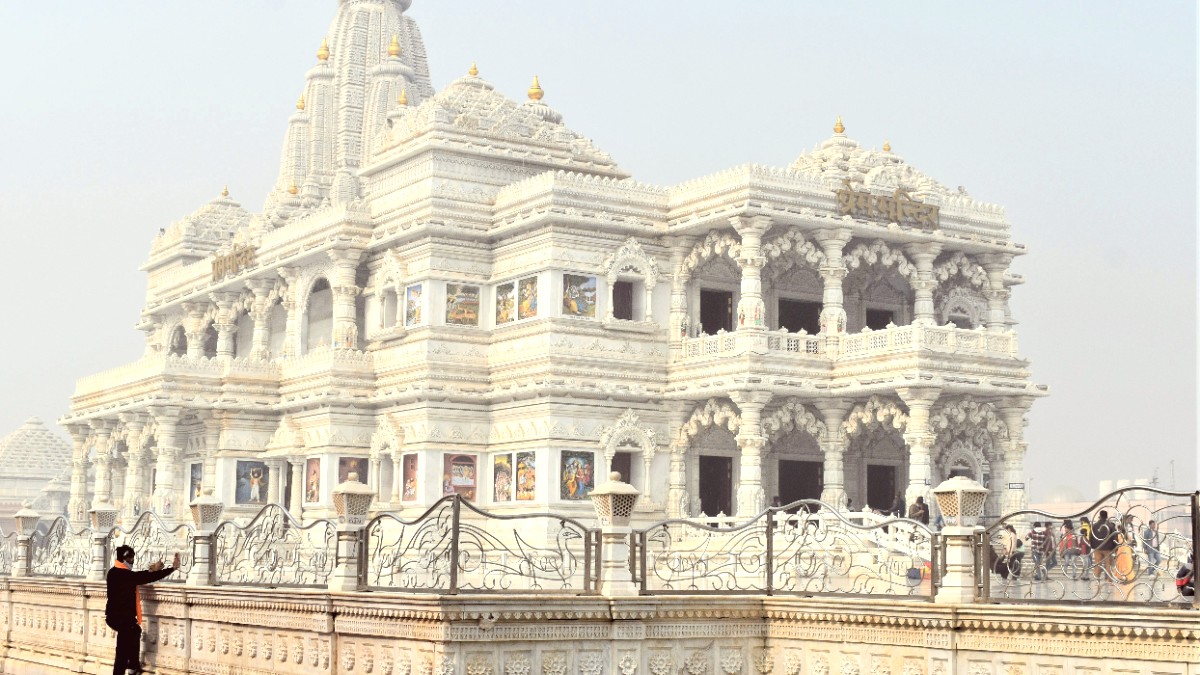
Uttar Pradesh, India
Vrindavan is a sacred Vaishnavite pilgrimage site. Local cuisine is almost entirely vegetarian.
The concept of "sattvic" food is prominent, meaning food without onion, garlic, or eggs. Dairy products are central to the cuisine.
No meat, fish, or eggs. Do not ask for non-vegetarian options. Respect this custom.
Always wash your hands thoroughly before and after eating. Many locals eat with their right hand; use only your right hand.
Common to share dishes. Some smaller, traditional eateries or ashrams may require you to remove your shoes.
Vrindavan is renowned for its pedas, a famous sweet. Made from khoya (reduced milk solids), sugar, and cardamom.
Find pedas at numerous sweet shops throughout Vrindavan.
These are popular savory fried pastries. Kachori is a round, fried pastry. Samosa triangular, filled with spiced potatoes and peas.
Served hot with various chutneys. Find them at street food stalls and small eateries.
A sweet, crispy, deep-fried dessert. Batter squeezed into hot oil, then immediately soaked in warm sugar syrup.
Best eaten hot and fresh. Available at sweet shops and street stalls.
Spiced potato patties, pan-fried until crispy, often served with yogurt and chutneys.
Diverse savory snacks, for their explosion of flavors – spicy, sweet, tangy, and crunchy.
True fine dining is very limited. For a refined experience, visit upscale hotels in Mathura (e.g., The Nidhivan Sarovar Portico).
Several mid-range vegetarian restaurants are available, especially near Prem Mandir and ISKCON Temple areas.
Prevalent throughout Vrindavan, especially around the Banke Bihari Temple area, Loi Bazar, and main thoroughfares.
International cuisine options extremely limited. The focus is overwhelmingly on local North Indian vegetarian food.
Some hotels basic Chinese or South Indian dishes, but do not wide variety of global cuisines.
Embrace the local flavors. It is fresh, flavorful, and a central part of the Vrindavan experience.
Local markets like Loi Bazar feature numerous street food vendors and sweet shops. No formal indoor food halls.
Vrindavan is a paradise for vegetarians. All food is meat-free.
Many dishes dairy products. Confirm if ghee or other dairy are used.
Challenging due to wheat in Indian breads. Rice-based dishes generally safer.
Communication difficult at small stalls. A translation card aids communication.
Beyond Lassi, try Fresh Lime Soda (sweet, salty, or mixed), Chaach (spiced buttermilk), and fresh fruit juices.
Be cautious about water purity for juices.
Alcohol generally unavailable. Consumption highly discouraged due to its sacred religious nature.
Most shops and restaurants do not sell it, and public consumption not accepted.
Food is an integral part of religious festivals. Special sweets and dishes are prepared for various occasions.
Arranging a local food walk with a knowledgeable guide a great way to explore the street food scene safely and discover hidden gems.
Vrindavan is a paradise for vegetarians. Almost all food served is meat-free, making it simple to find suitable options.
While all food is vegetarian, many dishes frequently use dairy products (ghee for cooking, paneer, milk, yogurt).
Gluten-free can be challenging. Wheat is a staple ingredient in many Indian breads (roti, paratha, puri).
Choose dishes with fewer ingredients or ones where you can easily identify components.
Less complex preparations might lower allergen risk.
If your accommodation has kitchen facilities, self-catering some meals is often safest for severe allergies.
Offers full control over ingredients.
As all food is strictly vegetarian and dairy-centric, it would not fall under Halal or Kosher meat preparation guidelines.
Vrindavan's culinary scene is deeply intertwined with its spiritual character. Expect a vegetarian and sattvic focus throughout your visit.
The local vegetarian food is fresh, flavorful, and a central part of the Vrindavan experience. Immerse yourself.
Vrindavan's culinary scene is deeply intertwined with its spiritual character. All food served is vegetarian.